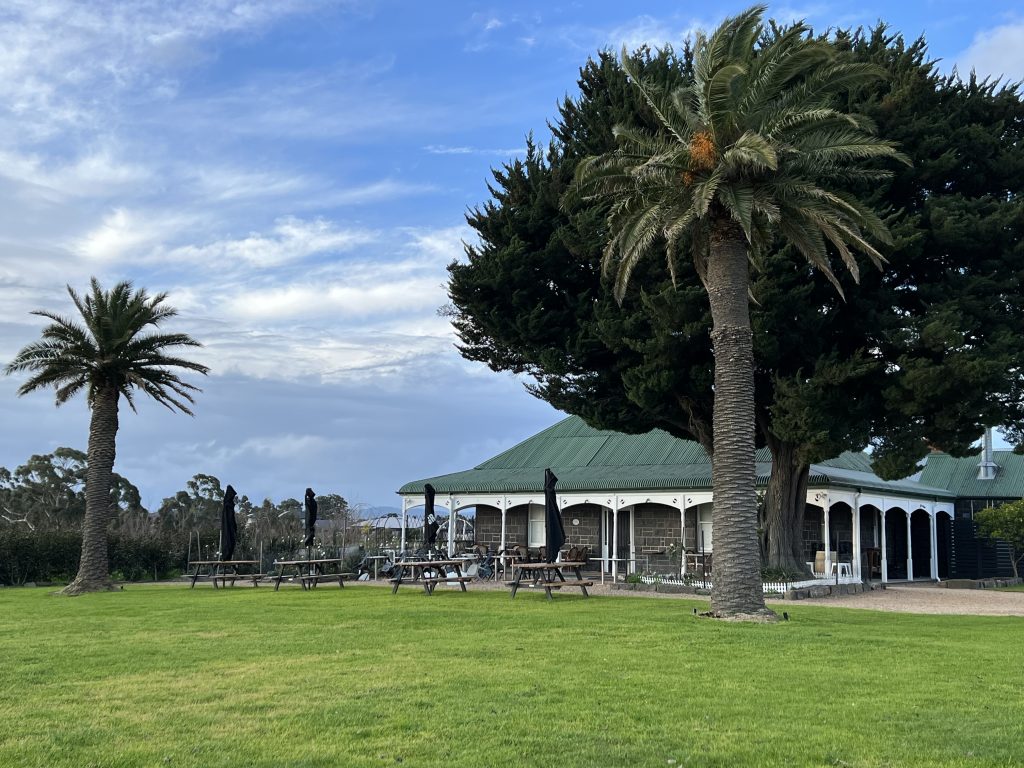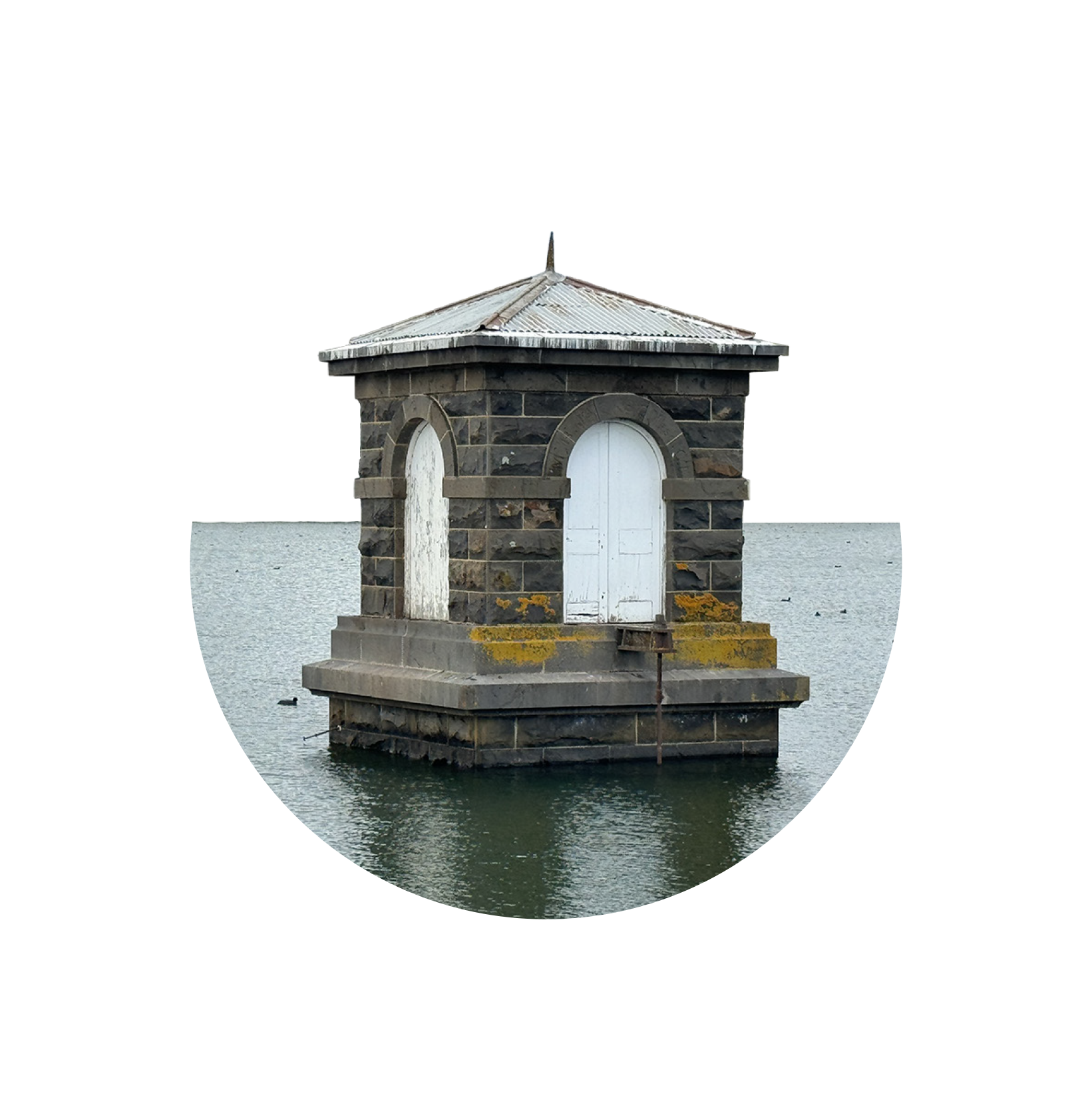Carome Homestead in Mernda
Carome Homestead in Mernda
By Barbara Miller

In 1840, Arthur Serjeantson (also written Sergeantson) purchased Section 19, Lot 11, in the Parish of Morang, a total of 842 acres for the price of 1,326 pounds. This large property covered as far north as Bridge Inn Road. He named the property Sergeantson Hall, although it soon became known as Carome, which was the name of the small flour mill established on the Plenty River in 1841. The flour mill that Sergeantson built was one of Victoria’s first water-powered flour mills.
Sergeantson sold the northern portion of his property in September 1840, and kept the southern 411 acres for himself. There was a wooden house, but it seems that Arthur didn’t live there for long, being noted in 1845 as being from ‘the Murray River’. He continued to own the Mernda property however, as the 411 acres of land with the mill was sold to Abraham Willis in 1857 for 2,700 pounds cash, after Serjeantson’s death in 1853.
Other mills existed along the Plenty River, each harvesting the water from the Plenty River. It was the building of a masonry wall in the river by Moses Thomas, in order to provide a greater head of water and more regular flow for his own large mill a mile upstream, which caused the amount of water available to Mr Willis to become insufficient. A case was brought in the Supreme Court, in which Willis sought compensation for the reduced flow of water in the Plenty River. Willis lost the case, after Thomas argued that the dam he had built actually benefitted the mill owners downstream. Eventually, after the building of the Yan Yean Reservoir caused the subsequent occasional redirection of water from the Plenty River into the reservoir, the mill became unviable. The development of steam engine powered mills around this time also made the Carome mill outdated and redundant. In 1868 the mill was destroyed by fire, which led to an insurance claim by the owner. The fire was found to have been deliberately lit, and the insurance claim was not allowed. There are still some remnants of the mill that remain, overlooking the Plenty River.
The homestead itself was built in 1861 from locally cut bluestone, and is of standard late nineteenth century style, with 2 front rooms and 2 back rooms, surrounded by a veranda. It is one of the oldest buildings in the City of Whittlesea and historically significant due to the association of the flour mill with the Melbourne markets in the 1840’s.
In 1922, the Power family bought the Carome property, where they remained until 1973, when the property was bought by T F Danaher, and managed by Peter Barba. At the time that Peter Barba arrived, the house was being used to store hay, so you can imagine the effort required to bring it back to a liveable standard. During this time, Danaher developed the property as a horse stud. In the 1970s and 80s, there was a large sign at Plenty Road, and a distinctive gateway made of long poles, which marked the entrance to the property. This remained until housing development took over that area, and the entry to the property and homestead moved south, now along residential streets. The Parkway is the road that now leads to the homestead through the new residential estates of Mernda. The original Carome buildings and outbuildings are quite intact, and provide an insight to the history of the homestead and its beginnings as a working farm.
The State Government bought the property in December 2005, to become part of the Plenty Gorge Park. Today the homestead sits on only 72 acres of the original 842 acres purchased in 1840. The home, along with other significant heritage buildings, has been the subject of extensive restoration and improvement works.
Today you can visit the homestead as Two Beans at Carome Estate. You can wander around the farm area, admire the bluestone buildings, and sit comfortably to enjoy a coffee or a meal. Walk along the Plenty River, admire the natural environment of the Plenty Gorge, and remind yourself of the pioneers who lived here 180 years ago.
This article was put together from information available on the Whittlesea Historical Society website; from an article titled ‘Carome; a short history’, written in 2008 by Ross Mugavin and Lindsay Mann; and from the book ‘The Plenty; a centenary history of the Whittlesea Shire’ by J W Payne.
You may have noticed that Vance Bebbington’s article last month made reference to “the Yan Yean cemetery, now known as the Whittlesea cemetery”. In my time in Whittlesea I have never heard it called the Whittlesea cemetery, but the comment was left in the article, as it was the opinion of the author.
Whittlesea Historical Society will be hosting a free event at Carome homestead on Sunday the 16th of June (see advertisement) in the old Wollert church, celebrating our memories of the kitchen, with old fashioned favourite recipes, and kitchen gadgets from days gone by. Bookings are essential through Try Booking, due to limited space in the church building. We’d love to welcome you there.

